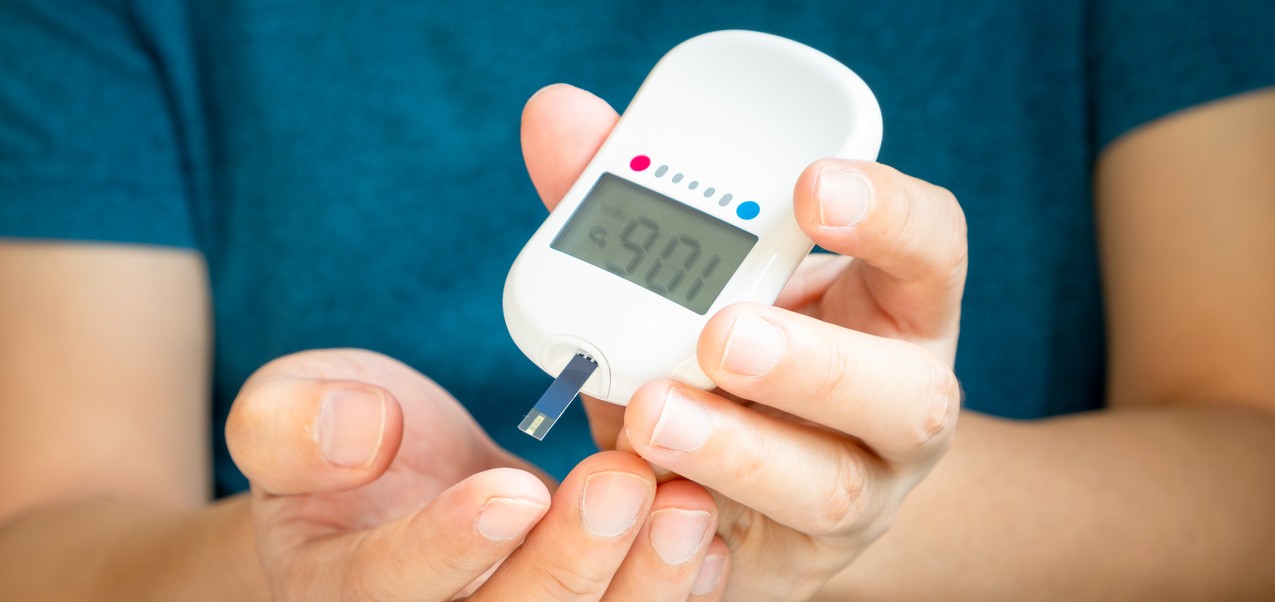Medical Analytics | 10 August 2023
The world’s largest conference dedicated to the science and treatment of cancer took place in Chicago in early June. The American Society of Clinical Oncology’s annual meeting is a popular forum at which new scientific developments are often revealed. This year was no different and it included the presentation of over 250 abstracts of new research and around 2,000 others presented in brief written form. Here we focus on new diagnostic techniques aiming to diagnose cancer at earlier stages.
Early detection of cancer
Cancer is easier to treat if it is diagnosed early. Multi-cancer early detection (MCED) tests are being developed which aim to detect cancers at more treatable stages. These tests seek to identify fragments of DNA circulating in blood which have been released by cancers. The ability to diagnose (or rule out) cancer using a simple, minimally invasive test could be extremely valuable. Data from a recent trial sheds light on how effective the technology currently is and what its major limitations are.
Trial update
The SYMPLIFY trial enrolled over 6,000 patients in England and Wales who were already suspected of having cancer. They were referred to a hospital and investigated in the normal way, but in addition to typical investigations also had a blood test known as Galleri, developed by US company Grail.
Galleri is a leading MCED test based on earlier trials.
The following high-level findings were presented in Chicago and have since been published in a peer reviewed paper. When the test said a person had cancer, they truly did have cancer 76% of the time. When it said they did not have cancer, this was true 98% of the time. Overall accuracy was 66%.
However, accuracy varied a great deal depending on how advanced the cancer was and where it was in the body. While accuracy was 95% for late-stage cancers, it fell to below 25% for cancers at their earliest stages. These results are consistent with earlier trials of this technology and highlight a key limitation of MCED tests in their current form.
These tests would have greatest utility if they could detect cancers at earlier stages than otherwise detectable with current technology. Successfully detecting a late-stage cancer therefore offers, only minimal benefits, because treatment options and survival probabilities are more limited for these patients no matter how their cancer is found. More significant benefits would occur if a patient with vague symptoms (or no symptoms) could have cancer detected at early stages before it has progressed so far. Clearly these results suggest success identifying early-stage cancers presents a larger challenge – one the technology currently often fails to meet.
However, the data so far does suggest a real possibility of significantly improving early-stage diagnosis rates of many cancers for which there is currently no screening programme.
If the test proved sufficiently effective it might find a role as a screening tool, possibly alongside existing screening methods, or as a common blood test when patients present with vague symptoms, like pain or fatigue, which might be due to cancer but whose cause is usually more benign. It’s worth pointing out that the headline accuracy figures reported above would lower significantly if the test was to be adopted in these roles.
We have seen the test is better at finding more advanced cancers, and the accuracy levels above are a product of the SYMPLIFY trial focusing on people already strongly suspected of having cancer, for example because they presented with a worrying symptom. This trial design allowed people with cancer to come to light relatively quickly, which accelerates the trial.
However, this is not a point in the patient’s care pathway where clinicians expect MCEDs to be at their most effective. If used as a screening tool in the general population, the great majority of patients would have no cancer, and those who did have cancer would tend on average towards having earlier-stage disease, which this MCED is less good at detecting. This doesn’t preclude its use, but needs to be considered by policymakers.

Other trials needed
What we need then, is a trial to look at how useful it might be in a more realistic scenario. Luckily another trial is ongoing which should do just that. The NHS-Galleri trial has enrolled 140,000 patients in England and Wales between the ages of 50 and 77.
The participants will attend three appointments over two years, each of which includes a blood test, but only half will be tested with Galleri’s test. Other than their age, there is no specific reason to suspect cancer in these people. In fact, they must not have had cancer recently in order to sign up to the trial. This large trial therefore needs more time to allow cancers to naturally emerge in the enrolled group, but when they do it should provide insight into how many cancer diagnoses can be accelerated by this technology and – once more time passes – whether it can materially improve patient outcomes.
Early (interim) results from this trial could be available by the end of this year.
In the UK, any decision on whether to adopt the technology, and in which situations, would occur only after this larger trial concludes. In other markets, adoption of the technology could be very different in terms of when and in which situations it is used, with variables including cost, funding and patient demand.
Data from a similar study in the US suggests the technology has significant limitations. The test produced relatively few false positives – around 1 in every 200 people without cancer were told they might have it. However, it was only able to pick up around one in five cases of cancer.
Breath tests
In a separate development, scientists in the UK have reached late-stage trials of technology aimed at diagnosing cancer via breath samples. Primarily aimed at finding cancers of the alimentary canal (oesophagus, stomach, colon) plus the pancreas and liver, these tests take advantage of the fact some compounds change in concentration in the gut when cancer is present and can be detected in breath samples. If effective, this sort of technology could be relatively inexpensive and non-invasive, but we must first await a trial involving 20,000 patients taking place over the next three years to determine if it is sufficiently accurate to play a significant role in diagnosing cancers early.

Conclusion
What does this mean for cancer patients and insurers?
Should this technology prove successful, it would be enormously beneficial to society, improving quality and length of life for many.
For insurers, the impact could be mixed. Those writing mortality products would tend to benefit from higher proportions of cancers being diagnosed at early stages when treatments are more effective. This would reduce, or defer, payments relating to death from cancer.
Insurers writing other products could face challenges. Chief among these would relate to products paying claims on diagnoses of cancer.
It is reasonable to assume these technologies would cause some claims to manifest many months, even years, earlier than they otherwise would. This impacts the premiums collected and interest earned on affected policies. Some cancers which might have occurred beyond the end of fixed terms could now be within the period of coverage, and decreasing covers would typically pay higher amounts. Scope for using this technology to detect disease at pre-cancerous stages appears limited. We therefore cannot expect a material offset whereby some cancers are prevented altogether by this technology.
Insurers writing cancer-specific products would face more concentrated risk, while products covering a wider range of critical illnesses would experience more diluted impacts. Increased life expectancies would bring challenges for longevity business with any offsets against mortality protection being sensitive to the age mix of the respective portfolios.
Actual impacts will depend on how the tests are used. Broad adoption as part of national screening programmes or low-cost, widespread incorporation into private healthcare plans would tend to lead to more significant effects.
The engagement of the insured population with this technology remains a key unknown.
References
- SYMPLIFY — Oxford Cancer
- Multi-cancer early detection test in symptomatic patients referred for cancer investigation in England and Wales (SYMPLIFY): a large-scale, observational cohort study - The Lancet Oncology
- ASCO: Grail’s cancer blood test ‘promising’ in UK trial | pharmaphorum
- Even in this high-risk group, most people did not have cancer, so the 2% inaccuracy among all people told they did not have cancer accounts for quite a large number of people. On only around two-thirds of occasions where the tests said a person had cancer was it correct to do so. False positives can cause significant patient anxiety, though note existing screening techniques also have false positives, and these represent the fairest comparison.
- NHS-Galleri Trial | Detecting cancer early
- The other half of samples will be stored. They may be tested in future, but they form the control group and so no test will be performed as part of the initial trial.
- Esmo 2022 – Galleri’s real-world exhibition disappoints | Evaluate
- UK trials for cancer breath tests reach final stages | Cancer | The Guardian
Pacific Life Re Limited (No. 825110) is registered in England and Wales and has its registered office at Tower Bridge House, St Katharine’s Way, London, E1W 1BA. Pacific Life Re Limited is authorised and regulated by the Financial Conduct Authority and Prudential Regulatory Authority in the United Kingdom (Reference Number 202620). The material contained in this booklet is for information purposes only. Pacific Life Re gives no assurance as to the completeness or accuracy of such material and accepts no responsibility for loss occasioned to any person acting or refraining from acting on the basis of such material.
©2023 Pacific Life Re Limited. All rights reserved.

Ian Collins
Vice President

Mike Wilson
Associate Vice President












.png)
.png)





















.png)